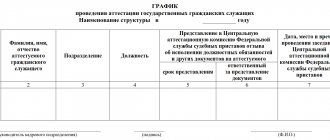The engineering and energy industries in our country are developing at a large-scale pace and often go inseparably from each other. Therefore, an increasing number of specialists in this field are appearing. In order to regulate their activities, the legislator develops a large number of norms. Among them there is a unified tariff and qualification reference book (UTKS), a job description, as well as one of the most important regulations - the professional standard. Due to the differences in the areas of application of the skills of energy engineers, there is no end-to-end document for them.
Normative base
There are general and specific regulations regarding professional standards. General regulations include the Labor Code of the Russian Federation (Chapter 31), which includes detailed information on the need to apply professional standards. In addition, attention is paid to the template for drawing up a document approved under Order of the Ministry of Labor and Social Protection No. 147n.
There is no single private regulation for the activities of a power engineer, since this position is found in several sectors of the economy. But among the documents that the government managed to approve, describing specific responsibilities, the following standards should be highlighted:
- for a specialist in the operation of electrical equipment at thermal power plants (document number 20.016, approved by Order of the Ministry of Labor and Social Protection dated October 5, 2015 No. 690n);
- for craftsmen servicing equipment related to relay and emergency protection of hydroelectric power plants (the document was approved by Order of the Ministry of Labor and Social Protection No. 1188n dated December 26, 2014);
- for an employee on the use of pipelines and heating networks (regulation - Order No. 246n dated April 11, 2014);
- for a professional in the field of energy inspection of construction sites (dated March 13, 2017, No. 276n).
Documents for download (free)
- Worker operating relay protection and emergency automation equipment for hydroelectric power plants
- Specialist in energy survey of capital construction projects
- Specialist in operation of pipelines and heating network equipment
- Worker operating electrical equipment of a thermal power plant
This list does not include documents that have been accepted for development, but are not currently approved. And at present there is no need to talk about the formation of a unified standard for this specialist.
Basic rules of the job description of the head of the planning and economic department
The laws of Russia do not have a uniform sample job description for the head of the planning and economic department. This allows the company’s management to draw up a document at their own discretion, but only in accordance with the Labor Code of the Russian Federation.
Since the legislation did not provide a uniform template for this type of document, a situation arose when employees in the same position, but in different companies perform different functions. However, the powers and responsibilities of employees are practically the same.
The document must include the following paragraphs:
- general provisions;
- responsibilities;
- rights;
- responsibility.
Important information! The company administration has the right to include other sections in the paper. However, each of them must not contradict the laws of Russia.
The document is drawn up in a single copy. An exception is the case if the enterprise has several divisions, in each of which a planning and economic development department is organized, headed by a chief. In this case, the number of copies of the job description must correspond to the number of employees.
Each job description is approved by the head of the enterprise. The employee signs his copy, after which the paper is put into his personal file and stored for the entire time the employee works at this place.
Why do we need a prof. standards?
The main goal facing the developers of these documents is to ensure regulation of the activities of specialists. Among all the documents that are currently subject to development, there is a draft end-to-end professional standard specifically for an energy engineer. Initially, its adoption was planned for December 1, 2015, but this moment had to be postponed. It was developed on the basis of a template (according to the form approved by Order No. 147n). In accordance with it, the document includes several sections.
- Common data. A detailed description of the type of activity, the purpose of the existence of the document, OKZ, OKVED are given.
- Functional map. Contains generalized options that serve as basic functions for a given specialist. For each of them, a qualification level is provided according to the corresponding scale used in ETKS.
- Characteristics of job responsibilities. Each task is described separately, and a list of requirements for education, experience, and working conditions is also presented.
- Materials about the creators. These can be scientific, industrial organizations, cooperatives, collegiums.
Through a well-drafted document, it is possible to establish specific requirements for a candidate for a certain position and to provide the staff with highly qualified personnel.
Features of drawing up a professional standard for a software engineer
In 2013, the professional standard for programmer 06.001 was approved (as amended on December 12, 2016). It contains the following sections:
- Introductory part, which provides information about the group and purpose of professional activity, as well as its classification as a type of economic activity according to OKVED.
- Information about the labor functions underlying the profession. Data are presented both on generalized functions and on their components. The document contains four generalized programmer functions and 15 of their components. For each of them, the code, level and sublevel of qualification are given. Thus, the generalized function for developing and debugging program code contains five components: checking the code, working with its version control system, etc.
- Detailed characteristics of labor functions. First, a description of the generalized function is given: its name, origin and other general data. Next come the requirements for the level of education and work experience, as well as additional characteristics. Thus, to perform the general function of checking the functionality of a program code and refactoring it, a software engineer is required to have relevant work experience of at least 0.5 years, as well as specialized education and advanced training courses.
- Also in the section for each component of the generalized function the following are spelled out: labor actions, necessary knowledge and skills. For example, for the component “Development of test sets, data” two labor actions are indicated (data preparation and their evaluation). For their qualified implementation, a specialist is required to possess three skills (development of test cases and test data generation procedures, preparation of their sets) and have knowledge in three areas (the basics of creating test data, requirements for their structure, methods for creating test cases).
- The document ends with a description of the organizations responsible for its preparation.
Attention! Since the document does not cover all job aspects (authorities, responsibility criteria, etc.), it is recommended to additionally apply the job description and employment contract for them.
Scope of application and mandatory use
There are several areas in which this document is applicable, here are the main ones:
- organization of a special training program by the employer;
- carrying out certification events within the company’s walls;
- staffing of specialists with highly qualified workers;
- creation of personal remuneration systems for the organization;
- improving the quality of service facilities;
- simplification of classification of employees based on their salary categories.
The use of a professional standard for specialists in the field of energy and engineering is mandatory, as stated in Art. 57 Labor Code of the Russian Federation. However, it should be taken into account that this document is not developed for all areas.
If an employer, for the specifics of whose activities there are no regulations yet, still wants to apply its norms, you can develop your own original according to template No. 147n or use a job description based on the ETKS.
How to get to study at NTU and why you should choose us
To obtain additional professional competencies for radio electronics engineers
and confirmation of existing qualifications, sign up for professional standard training by phone or through a special form on this website and we will call you back at any time convenient for you.
By choosing the National Technological University, you are guaranteed to receive:
- a large selection of additional vocational education programs;
- prices are lower than the market average, and the quality of the material is much higher;
- professional retraining, on the basis of a certified University, without the participation of intermediaries;
- a procedure for acquiring additional qualifications that works like a well-oiled mechanism, which significantly reduces training time;
- personal manager, free consultations and guarantee impeccable quality of service.
Job responsibilities
The general labor obligations of a specialist are specified in his job description, but most of them are duplicated in specialized standards. The business functions of a specialist include the following tasks:
- ensuring high-quality uninterrupted operation, rational operation, as well as repair work and modernization of energy units of equipment, thermal power plants, gas pipelines, etc.;
- determining the need for production in fuel and energy resources, preparing basic justifications for technical development, re-equipment, economics, reconstruction and modernization;
- drawing up applications for the purchase of materials, equipment, spare parts that will be required to perform direct job duties;
- carrying out calculation activities accompanied by the presentation of the required justifications for savings and costs;
- taking part in the development of consumption standards for each division of the organization, in accordance with the calculated energy requirements;
- drawing up schemes and schedules aimed at reducing energy loads, ensuring the implementation of plans, ensuring the certification process;
- taking part in testing practices and acceptance of installations;
- comprehensive technical supervision of the current condition of devices used by the enterprise to carry out commercial activities;
- monitoring compliance with instructions related to the operation, maintenance, and supervision of equipment and electrical networks;
- preparation of materials for the purpose of concluding contractual agreements for repair work;
- control of repair work on electrical equipment;
- monitoring and studying best practices related to the rational operation of fuel and energy resources;
- ensuring unconditional compliance with labor safety standards;
- preparation of reporting documentation in accordance with the forms and indicators that are approved;
- execution of a list of individual official assignments received from a superior manager.
The list of job responsibilities of this specialist is already quite impressive, but can also be supplemented by industry documents.
Application of professional standards in practice
For the successful implementation of professional standards, the following procedure is recommended:
- Develop and approve regulations describing the procedure for their application. It indicates those responsible, the implementation schedule, the scope of work, etc.
- Consider the activities of the organization and its employees. It is necessary to clarify the scope of their responsibilities, how they correspond to their positions, etc.
- Find professional standards that suit the profile of the organization and its employees.
- Make appropriate changes to the current labor documentation (staffing schedule, instructions, etc.).
- Based on the reforms carried out, carry out the necessary organizational changes (redistribute responsibilities, rename positions, etc.).
After completing these stages, the employer will be able to:
- Formally formalize the correct requirements for the qualification level of employees.
- Require them to undergo appropriate retraining.
- Conduct re-certification based on the collected data.
- Refuse employment to applicants who do not pass the qualification selection.
Attention! The Labor Code does not contain the possibility of dismissing an employee for non-compliance with the qualification parameters of the professional standard. This cannot be done even if he refuses to undergo retraining. Then you can try to transfer him to a less responsible position under Article 72.1 of the Labor Code.
Employee compliance requirements and working conditions
In order for a candidate to count on getting the coveted job, he needs to ensure full compliance with a set of requirements.
- Education: higher education (bachelor's degree) within the specialty in question is required.
- According to experience - from 1 to 5 years, depending on the category of specialist and the specifics of the activities of a particular organization.
- Availability of electrical safety approval.
- Regular training.
- Periodic registration for medical examinations, including extraordinary events.
- Knowledge of safety regulations and fire protection of facilities.
- Possession of all knowledge about the subject of work.
Among the personal qualities that an energy engineer should have are punctuality, accuracy, accuracy, forethought, and the ability to work in a team. Working conditions are specific and imply readiness to perform work duties outside of normal hours.
Who is a chief engineer
The position of chief engineer involves combining the functions of a technical specialist and manager. An employee in this position must have knowledge of all the technical intricacies of the area in which his enterprise operates, since only this will help him effectively manage the technical process itself. After all, only after working directly in production can you understand how best to manage it, in what direction to modernize and develop it. This is why chief engineers often emerge from ordinary specialists.
In the Unified Qualification Directory of Positions for Managers, Specialists and Other Employees, the position of chief engineer is classified as a manager. Accordingly, he is charged with many official responsibilities, including:
- determination of the technical policy of the enterprise;
- determination of ways of technical development, modernization and reconstruction of production;
- increasing production efficiency and reducing costs;
- organizing testing of new equipment and conducting scientific experiments within the framework of technological processes.
Naturally, such a specialist is subject to increased qualification requirements: he must be an employee with a higher technical education who has worked for at least 5 years in a specialized management position.
There are so many areas of production where there is a position for a chief engineer that it is simply not possible to consider all the professional standards in one short article, so let’s take just two of them as an example:
Subscribe to our newsletter
Read us on Yandex.Zen Read us on Telegram
- professional standard for chief engineer in the field of oil and gas refining;
- professional standard for a chief engineer in the maintenance sector of a multi-storey building.
Drawing up a job description for the head of the planning and economic department
The document begins with approval by the company administration. The corresponding inscription is made in the upper right corner of the paper. Here they indicate the position of the head of the enterprise and personal information. The employee puts his signature under this information and indicates its transcript.
Next is the title of the document. It fits in the center of the paper.
Main part of the instructions
The main part of the document is general information about the position. First of all, it sets out the requirements that an applicant for a position must meet. In addition, all the information that the employee should be familiar with is indicated here.
The main part of the paper indicates the following points:
- rules for hiring an employee;
- how exactly an employee is released from his position;
- under whose direct subordination is the head of the department.
The general information also prescribes all the regulations that the head of the planning and economic division of the enterprise must follow in his activities.
Second section
This section directly indicates the job responsibilities of the employee. The more accurately and completely this section is compiled, the better the employee understands what he must do. In addition, it is on the basis of this section that the administration understands what exactly can be asked of the employee.
Third section
All rights granted to the employee are indicated here. Thanks to this section, the employee understands what powers he has that allow him to carry out his activities.










